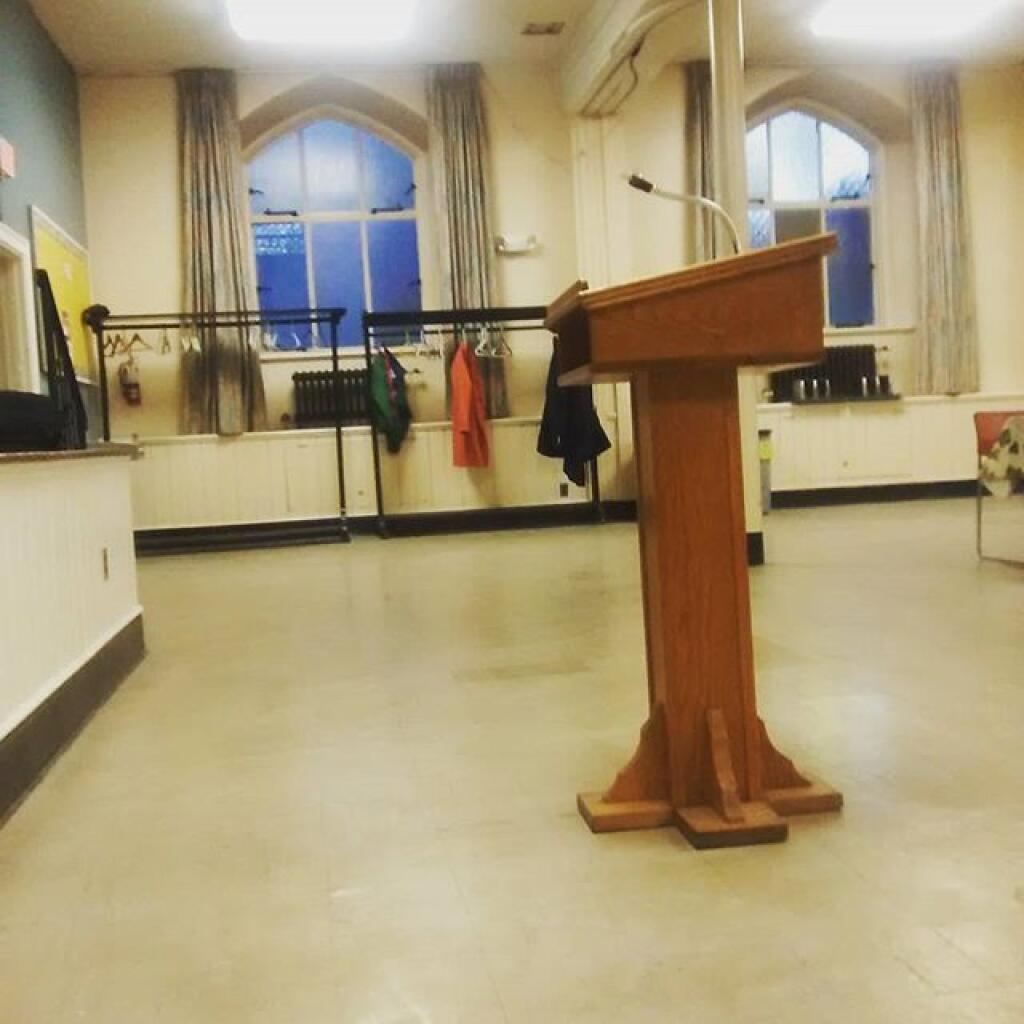Good evening! Mostly cloudy and 26 degrees in City of Albany. Calm wind.The skies will clear Thursday around 6 am. Getting to bed early tonight as with the weather tomorrow I expect a challenging commute.
I went to Brooklyn Night at the Egg tonight after work today and ate lots of hot dogs, pretzels and beer. Good food but I made sure to drink water now that I’m home so I don’t wake up to a hang over. When I wake in the morning it will be a winter wonderland.
It’s going to be a very interesting commute tomorrow but with boots and hats, bus time and some luck with the bus tomorrow I’ll make it work. I might get stuck at the office tomorrow but I’ll watch the conditions and try to leave before the last bus makes it out to the suburbs in the evening. Adults don’t get snow days unless of course your a non essential state worker, which I’m not. Tomorrow is a legislative session day and the business of governing has to go on tomorrow. If I called out for the day, I’d have to use vacation time and honestly I’ll be fine. If I have to spend the night at work, won’t be the first time that has happened. Don’t worry, I’ll live tweet my commute from hell. At least in the office I doubt we’ll lose power or heat. And they have wireless Internet there.
Tonight will have a chance of snow, mainly after 3am. Areas of fog after 5am. Otherwise, mostly cloudy, with a low of 19 degrees at 6am. Six degrees below normal. Light east wind. Chance of precipitation is 40%. Total nighttime snow accumulation of less than a half inch possible. In 2016, it got down to 40 degrees with periods of rain. The record low of -6 occurred back in 1948.
Waning Gibbous Moon tonight with 90% illuminated. The moon will . The Last Quarter Moon is next Monday. The Full “Pink” Moon is on Tuesday, April 11th. The sun will rise at 7:08 am with the first light at 6:40 am, which is one minute and 44 seconds earlier than yesterday. Tonight will have 12 hours and 6 minutes of darkness, a decrease of 2 minutes and 55 seconds over last night.
Tomorrow will snow. The snow could be heavy at times. Areas of blowing snow after 2pm. Areas of fog before 8am. Areas of dense freezing fog. High of 26 degrees at 3pm. 17 degrees below normal. Northeast wind 11 to 18 mph, with gusts as high as 29 mph. Chance of precipitation is 100%. New snow accumulation of 11 to 17 inches possible. A year ago, we had rain and a high of 47 degrees. No rain tomorrow. The record high of 75 was set in 1946. 12.9 inches of snow fell back in 1958. That record is going down tomorrow.
Not a particularly nice weekend on tap. Saturday, a chance of snow before 4pm, then a chance of rain. Mostly cloudy, with a high near 39. Chance of precipitation is 50%. Sunday, a chance of rain and snow showers. Mostly cloudy, with a high near 39. Chance of precipitation is 30%.Typical average high for the weekend is 45 degrees.
In four weeks on April 10 the sun will be setting at 7:32 pm, which is 32 minutes and 12 seconds later then tonight. In 2016 on that day, we had partly cloudy skies and temperatures between 47 and 23 degrees. Typically, you have temperatures between 56 and 35 degrees. The record high of 86 degrees was set back in 1922.
Looking ahead, Patriots Day is in 5 weeks, May Day is in 7 weeks and Memorial Day is in 11 weeks. I’m sure by Memorial Day Weekend it will stop snowing. Or so I hope, we got wet snow one year when I was camping at Moose River Plains.
